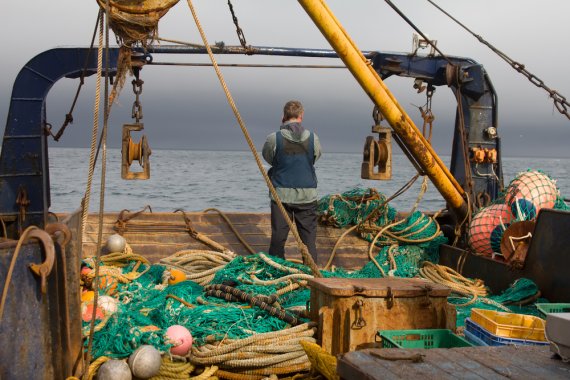<Photo: Shutterstock>
The research stems from the European regulation that fishermen are no longer allowed to discard (i.e. throw back into the sea) undersized fish. This landing obligation applies to the fish species for which there is a set fishing quota, like the sole and plaice. However, the legislator can make an exemption to this landing obligation in case of high survival probability. The study by Wageningen Marine Research, which was published in the ICES Journal of Marine Science earlier this month, provides a first answer to this issue.
Mortality
The WUR researchers evaluated the survival of fish on board two commercial fishing trawlers. During the study, undersized plaice was sampled during seven fishing trips and sole during six trips. The researchers concluded that 29 percent of the undersized plaices survives discarding, as does 15 percent of the soles. The mortality was clearly influenced by water temperature: a higher temperature caused higher mortality rates. The conditions aboard the fishing trawlers also had consequences for the mortality. Most fish perish in the first few days after having been brought on board due to lack of oxygen and wounds they suffered during the haul. The researchers also concluded that the mortality increased for longer catch processing times.
Acceptable
Researcher Karin van der Reijden, who carried out the study, does not want to define the survival rate upon discarding as low. ‘Fishermen will say that it is more than the zero percent that would survive if you would bring in the fish.’ According to Van der Reijden, the European Union, which established the landing obligation, should determine what survival percentage would be deemed acceptable to allow for an exemption. She also thinks that this acceptable percentage depends on the species and that additional research is required. ‘It is important to know whether the values of 29 and 15 percent have an effect on the population development of plaices and soles.’
Follow-up
The research was commissioned by the Coöperatieve Visserij Organisatie (Cooperative Fisheries Organisation) and was financed in part by the European Fisheries Fund. This year, the researchers will carry out a follow-up study on how the conditions on board the ship can be improved to increase the survival rate of discarded fish. Van der Reijden thinks that the haul duration could have the largest impact on the survival chances upon discarding. ‘If the haul is shorter, less fish will be caught and there will therefore be less damaged fish in the net. Additionally, the time needed to process the catch on board will also decrease. All these factors should lead to a higher survivability.’ The higher temperature on board the trawlers during summer also has its consequences. The researchers want to find out whether better cooling and treatment of the fish before processing will increase their survival chances.
An even better solution would be to no longer catch undersized fish, but that is difficult to achieve. Most fishermen want to catch plaice, because it is the most lucrative ashore, but they also have undersized soles as by-catch. It seems that the only possibility to catch less undersized soles is to enlarge the mesh size. However, large mesh sizes come at the expense of plaice catch and are therefore less desirable. Studies into the behavioural differences between the caught fish might offer a solution to this issue.

